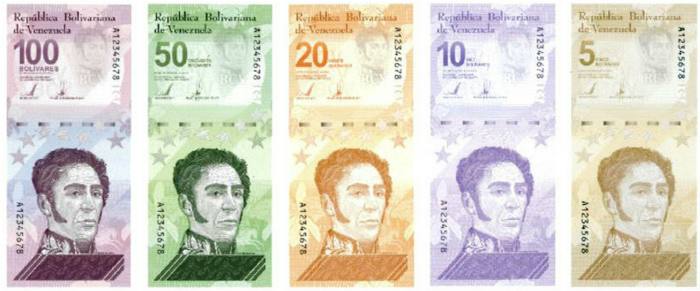Receive free Currencies updates
We’ll send you a myFT Daily Digest email rounding up the latest Currencies news every morning.
Venezuela has lopped six zeros off its currency in another bid to make the bolívar more manageable and rebrand it after years of hyperinflation.
On Friday, new bolívar notes went into circulation, with one new bolívar worth 1m old ones. There are currently around 4.2m old bolívars to the dollar, so one new bolívar is worth about 24 US cents. The new notes range from five to 100 bolívars and there is a 1 bolívar coin.
This is the third time Venezuela’s revolutionary socialist rulers have trimmed the currency. In 2008, president Hugo Chávez cut three zeros from the banknotes and in 2018, amid hyperinflation, his successor and current leader Nicolás Maduro got rid of another five and devalued the currency by 95 per cent.
The new banknotes come with a name change. This is now the “digital bolívar”, although it is no more digital than any other currency. The previous incarnation was the “sovereign bolívar” and the one before that the “strong bolívar”.
The elimination of the zeros should make life simpler for long-suffering Venezuelans who have had to grapple with dizzying numbers, although it is unlikely to have much of an effect on economic fundamentals.
“The only thing is that bank transfers will have fewer zeros,” said Henry Andrade, a fruit and vegetable merchant from the western state of Táchira on the border with Colombia. “Here in the village where we live the only currencies that circulate are Colombian pesos and dollars. The only thing we use bolívars for is to buy pesos.”
The Venezuelan economy has collapsed since Maduro came to power in 2013, and the country has been wracked by spiralling price rises.
Steve Hanke, a professor of applied economics at Johns Hopkins University, says the first hyperinflationary bout, from 2016 to 2019, lasted 28 months — the fifth longest on record. A second bout in 2020 lasted nine months.
According to the Venezuelan Observatory of Finance (OVF), a non-government body that measures price rises slightly differently, hyperinflation began in 2017 and has not stopped, making this the second longest bout on record anywhere in the world, surpassed only by Nicaragua in the late 1980s.
The sustained price rises prompted people to start using dollars. Even when Venezuelans use bolívars these days, for example when paying utility bills, they tend to pay with debit cards to avoid the hassle of piles of cash.
“Dollarisation has helped because it’s allowed things to level out and stabilise,” said 62-year-old Carmen Gutiérrez, the owner of a small clothing shop in Caracas.
Local consultancy Ecoanalítica said more than two-thirds of financial transactions in Venezuela were now made in foreign currency, predominantly the dollar.

In recent months, inflation has eased although it is still running at over 1,700 per cent annually, according to the OVF. In August, monthly inflation was a relatively modest 10.6 per cent, and it has been below the 50 per cent hyperinflationary threshold for the past six months.
“The spontaneous dollarisation of Venezuela has cut the legs out from under the country’s hyperinflation,” Hanke said.
The government blames US sanctions for Venezuela’s economic woes, even though the economy started to tank before Washington imposed its first sector-wide measures.
In launching the renewed currency, the Maduro regime claimed it was the victim of a “brutal attack on our economy [and] our national currency” via “the criminal application of an economic and financial blockade”.
“We all suffer the consequences,” said 71-year-old Fernando Alvarado, a retired state employee and government supporter. “It’s the people who suffer”.
The government said the digital bolívar would “help to deepen and develop the digital economy in Venezuela” and has vowed to create a digital currency, saying “the physical and digital bolívar will live alongside one another”.
But that appears unlikely in a country where power cuts are frequent and mobile phone coverage is patchy. “There isn’t the infrastructure for it. It isn’t deep, it isn’t stable and it isn’t widespread,” said Tamara Herrera, director of local consultancy Síntesis Financiera.
In 2018, amid much fanfare, the government launched an oil-backed cryptocurrency called the petro, which has largely sunk without trace.
“No one has ever paid us in petros,” fruit and veg wholesaler Andrade said.
While the introduction of the new banknotes should bring practical benefits to shoppers and shopkeepers and might even persuade some to use the national currency again, it has also sowed confusion.
One shopkeeper, asked how many zeros were being lopped off the currency this week, replied: “five”. Asked how much a bag of flour would now cost, she said: “One bolívar, I think. No, five!”
For all the latest Business News Click Here
For the latest news and updates, follow us on Google News.
